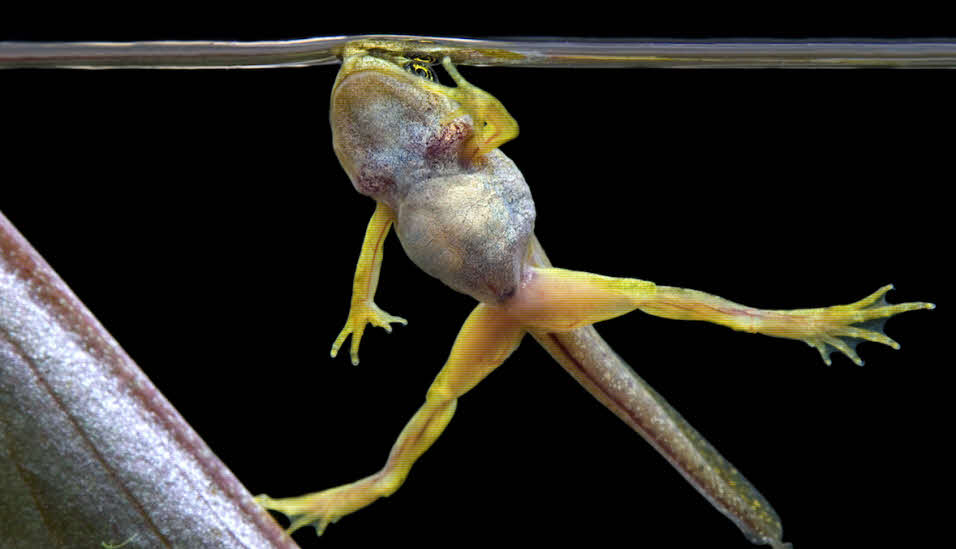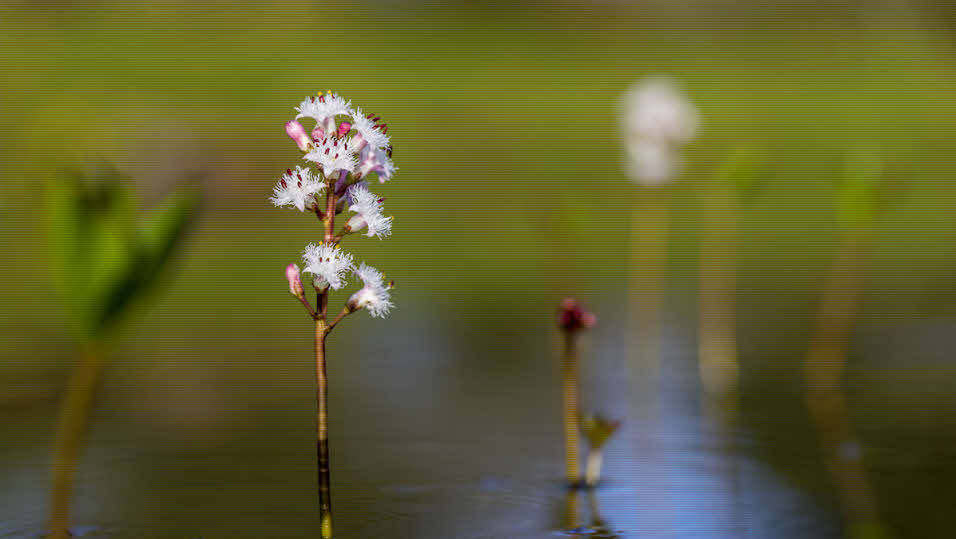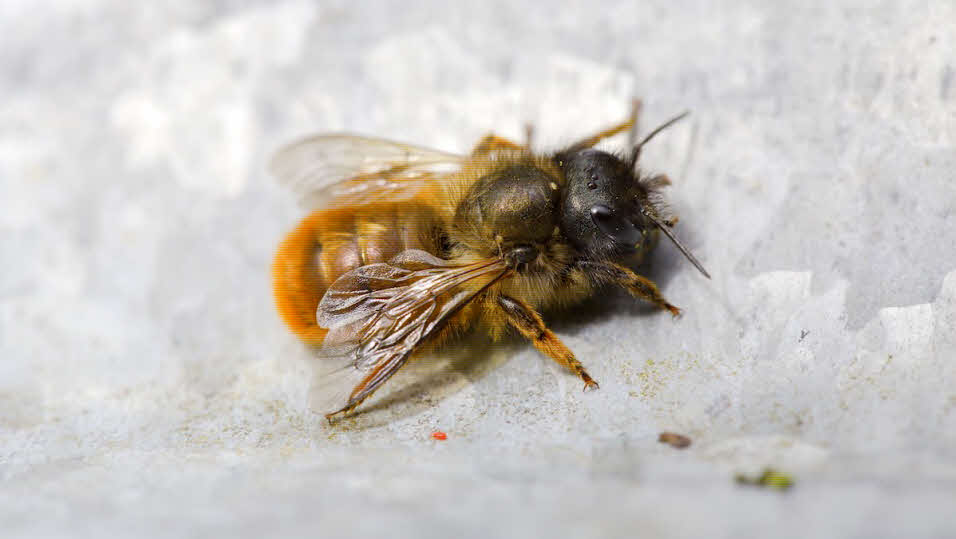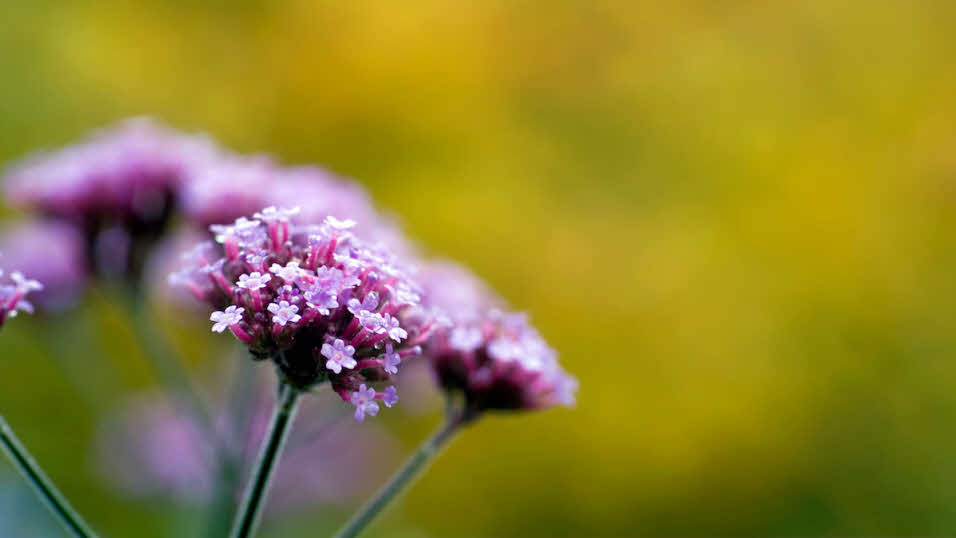Birdwatching at Dawn
Jonathan Manning sets his alarm clock early to witness the spectacular dawn flight of thousands of pink-footed geese from the RSPB reserve at Snettisham in Norfolk
Read moreNow is the perfect time to work on your garden - nature photographer David Chapman has some top tips on attracting a variety of creatures
 A froglet Credit: David Chapman
A froglet Credit: David Chapman
I’ve been fortunate to travel all around the UK in our motorhome looking for the very best of British nature. It makes my heart skip a beat when I see a kingfisher flying fast and low along a river, and I get a warm glow on finding a stunning orchid spike growing in a wildflower meadow. But what gives me the biggest buzz is when nature benefits from my actions in my own garden.
Over the years I have taken a number of simple, manageable steps to enhance our garden for wildlife, and when I see various critters taking advantage of my hospitality I get a real boost.
My wildlife gardening started in quite a general way. Looking for ideas to help a wide variety of creatures, I started with a garden pond – a move which is undoubtedly the best single thing anyone can do to support nature in their garden. It doesn’t have to be massive – just make it as big as you can, and it doesn’t have to be deep (although it is good to have varying depths within it).
What is important is that the sides of the pond slope gently, to allow access for amphibians and to enable birds and mammals to drink and bathe. Avoid the temptation to introduce ornamental fish because these will eat tadpoles and larvae. And I would never use non-native species of plant because these spread rapidly and can cause problems.
 Bogbean - good for attracting insects Credit: David Chapman
Bogbean - good for attracting insects Credit: David Chapman
Plants take a while to become established in and around a pond, so for the first year you may experience problems with algae – but if you aim to cover about 60% of the surface with floating vegetation, introduce some underwater oxygenating plants and grow a decent variety of species around the fringes, things will settle down in the longer term.
My favourite plants are fringed water lily and bogbean as pond cover and to attract insects; water crowfoot, with its delicate white flowers, as an oxygenator; and purple loosestrife, water mint, marsh cinquefoil, spearwort and ragged robin in and around the edge of the water.
My wife Sarah and I get immense pleasure from watching tadpoles, dragonflies, pond skaters and whirligig beetles, so whenever we go into the garden looking for wildlife, the pond is always our first port of call.
A couple of years ago I was given an unusual gift by a friend – a pile of broken thermal blocks, the type used in the building trade. These are similar to concrete blocks but are lightweight and can be cut with a simple handsaw – and they provide ideal homes for a number of insects.
I cut the blocks into attractive shapes, added little roofs as an ornamental effect and drilled holes (about 8mm diameter) into them. I positioned them on the south-facing side of my shed and the following spring I welcomed my first guests.
I felt a paternal instinct when mason bees and leaf cutter bees moved in to start laying their eggs. They stocked the holes with food for when they hatched and then capped them with mud and leaves respectively.
 Leaf cutter bee Credit: David Chapman
Leaf cutter bee Credit: David Chapman
From being quite a general wildlife gardener, I have become much more specific with my actions in recent years. I look at the creatures that visit our garden, identify them and then find out how I might be able to support them.
For example, most springs we see orange-tip butterflies. Some research suggested two plant species would be useful for them to lay their eggs on – cuckoo flower and garlic mustard.
In the past I had tried to plant cuckoo flower (aka lady’s smock) without success, so a couple of years ago I collected the seed of garlic mustard plants from roadside verges near where I live. Last year I had a few tall, healthy plants and, would you believe it, an orange-tip butterfly laid five eggs on them! Like a doting father, I checked on them every day until they disappeared, hopefully to pupate.
 Verbena Credit: David Chapman
Verbena Credit: David Chapman
Wanting to encourage as many insects as possible I have been busy taking cuttings from all the plants that I know are valued by bees and butterflies. I now have a bed full of rosemary, lavender, buddleia, verbena, fuchsia and privet cuttings, and I have split all the comfrey and mint plants that we have to spread them round our garden.
I managed to source some flower seeds from friends (foxgloves, mullein, knapweed, field scabious and more), and even spent some hard-earned cash in garden centres (try Mexican sunflower) so that I had a huge range of nectar-bearing plants to cover all the months from spring to autumn.
We mustn’t forget that these insects have to survive in a variety of forms through the winter, so I will leave some of the ivy and honeysuckle on the garage wall; pile up the leaf litter and dead twigs under the shrubs in autumn; collect logs and rocks to make habitat piles and tolerate a patch of uncut grass next to the pond. I still get a buzz from helping wildlife to thrive – next year I want the garden to buzz even more!